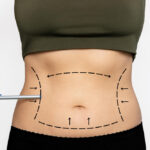Understanding the Cost of Dental Treatment
When seeking dental treatment, one of the most important considerations is the cost. The price of dental treatment can vary significantly depending on the procedure, location, and the clinic’s expertise. Basic services such as routine check-ups and cleanings are typically more affordable, while advanced treatments like implants, crowns, or orthodontics can be much more expensive. It’s essential to understand that while affordable options exist, cutting corners on essential dental care can lead to more expensive procedures in the future. Understanding the full scope of costs upfront allows patients to plan and budget for dental treatment more effectively, avoiding unexpected financial burdens.
Factors That Affect the Cost of Dental Treatment
The cost of dental treatment is influenced by several factors, including the type of treatment needed, the expertise of the dentist, and geographic location. Advanced procedures, such as dental treatment involving implants or root canals, tend to be more expensive than standard cleanings or fillings. Additionally, the location of the dental clinic plays a role; urban centers often charge higher prices compared to rural areas due to higher overhead costs. Another factor is the dentist’s experience—more experienced practitioners may charge more for their services, but they also often provide higher-quality care. Understanding these variables can help you navigate the costs of dental treatment and find options that fit your budget.
How to Find Affordable Dental Treatment
Finding affordable dental treatment involves doing some research and comparing options. Many dental clinics offer payment plans or sliding scale fees based on income, which can make treatment more accessible. Additionally, some dentists offer discounts or special promotions for new patients or for paying upfront. If you have dental insurance, make sure to check what treatments are covered and whether your provider has partnerships with affordable dental offices. Another option is to consider dental schools, where students, supervised by experienced professors, offer treatment at a fraction of the cost. By being proactive and exploring all options, you can find dental treatment that is both high-quality and budget-friendly.
Dental Insurance and How It Can Help with Treatment Costs
Dental insurance is one of the best ways to manage the cost of dental treatment. Many dental plans cover preventive care like cleanings and exams, as well as some restorative procedures such as fillings or extractions. However, more extensive treatments, such as implants or cosmetic work, may not be fully covered. Before choosing a dental treatment plan, it’s important to understand what is included and what you will need to pay out-of-pocket. Some plans may cover a portion of the cost for certain services, which can significantly reduce the overall expense. Be sure to read through your insurance policy carefully to understand your coverage options.
Low-Cost Alternatives to Expensive Dental Treatments
If you’re looking for dental treatment but are concerned about the cost, there are alternatives that can help save money while still providing effective results. For example, dental savings plans are an affordable option that can help cover routine care and discounts on more expensive procedures. Some clinics offer in-house financing, allowing patients to spread payments over time. Additionally, exploring preventive treatments like fluoride varnishes and dental sealants can help prevent more expensive procedures later on. Regular check-ups, proper oral hygiene, and the avoidance of harmful habits like smoking can also reduce the likelihood of requiring costly dental treatment down the line.
Long-Term Savings: Preventing Dental Problems Before They Start
One of the best ways to reduce the cost of dental treatment is by preventing dental problems before they arise. Regular dental check-ups are vital for spotting potential issues early, allowing for less expensive treatments to be done before they become major problems. Preventive care such as cleanings, fluoride treatments, and proper brushing and flossing at home can help avoid expensive restorative work in the future. By investing in preventive dental treatment, you can save money over the long term and ensure that your oral health remains in top condition without breaking the bank.
Choosing the Right Dental Care Provider
When searching for affordable dental treatment, choosing the right dental care provider is key. It’s important to find a dentist who offers transparent pricing and is willing to work with you on payment options. Look for dental professionals who offer a free initial consultation, allowing you to understand the costs and available treatments before committing. Additionally, consider patient reviews and recommendations from trusted sources to ensure the dentist you choose provides high-quality care at an affordable price. By doing your research, you can find a dentist who aligns with both your budget and oral health needs, making dental treatment more accessible.
Conclusion
In conclusion, affordable dental treatment is achievable with the right planning and research. By understanding the various factors that affect cost, such as the type of procedure and location, and exploring options like dental insurance, payment plans, and discounts, you can find affordable care that meets your needs. Preventive measures, such as regular check-ups and good oral hygiene, are crucial in keeping costs down by avoiding more expensive treatments in the future. Whether you have insurance or not, there are numerous ways to access quality dental treatment without breaking the bank. Taking care of your oral health is an investment in your overall well-being, and with the right approach, it doesn’t have to be an expensive one.
Frequently Asked Questions
- What is the cost of routine dental check-ups?
- Routine check-ups typically cost between $75 to $200, depending on the location and the dentist’s fees.
- Does dental insurance cover cosmetic procedures?
- Most dental insurance plans do not cover cosmetic procedures, but they may cover some restorative treatments like fillings or crowns.
- Are there financing options available for dental treatments?
- Yes, many dental offices offer in-house financing or work with third-party lenders to provide affordable payment plans.
- How can I prevent dental problems from becoming expensive?
- Regular check-ups, good oral hygiene, and healthy habits like not smoking can help prevent costly dental issues down the line.
- Is it possible to get a discount on dental treatment?
- Some dental offices offer discounts for new patients, upfront payments, or memberships in dental savings plans.
- What should I do if I cannot afford dental treatment?
- Ask your dentist about financing options or look for dental clinics that offer payment plans or work with your budget.
- Are dental savings plans worth it?
- Dental savings plans can be a good alternative to traditional insurance, offering discounts on treatments in exchange for an annual fee.
- Can I get a dental implant if I can’t afford it?
- While dental implants can be expensive, many clinics offer financing options, or you may consider alternatives like bridges or dentures.
- How often should I visit the dentist to keep costs low?
- It’s recommended to visit the dentist at least twice a year for check-ups and cleanings to prevent more expensive issues from arising.
- Can I find affordable dental care without insurance?
- Yes, many clinics offer affordable care through payment plans, discounts, and dental savings plans, even if you don’t have insurance.












